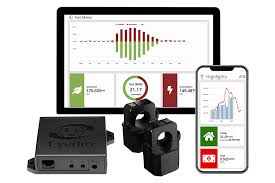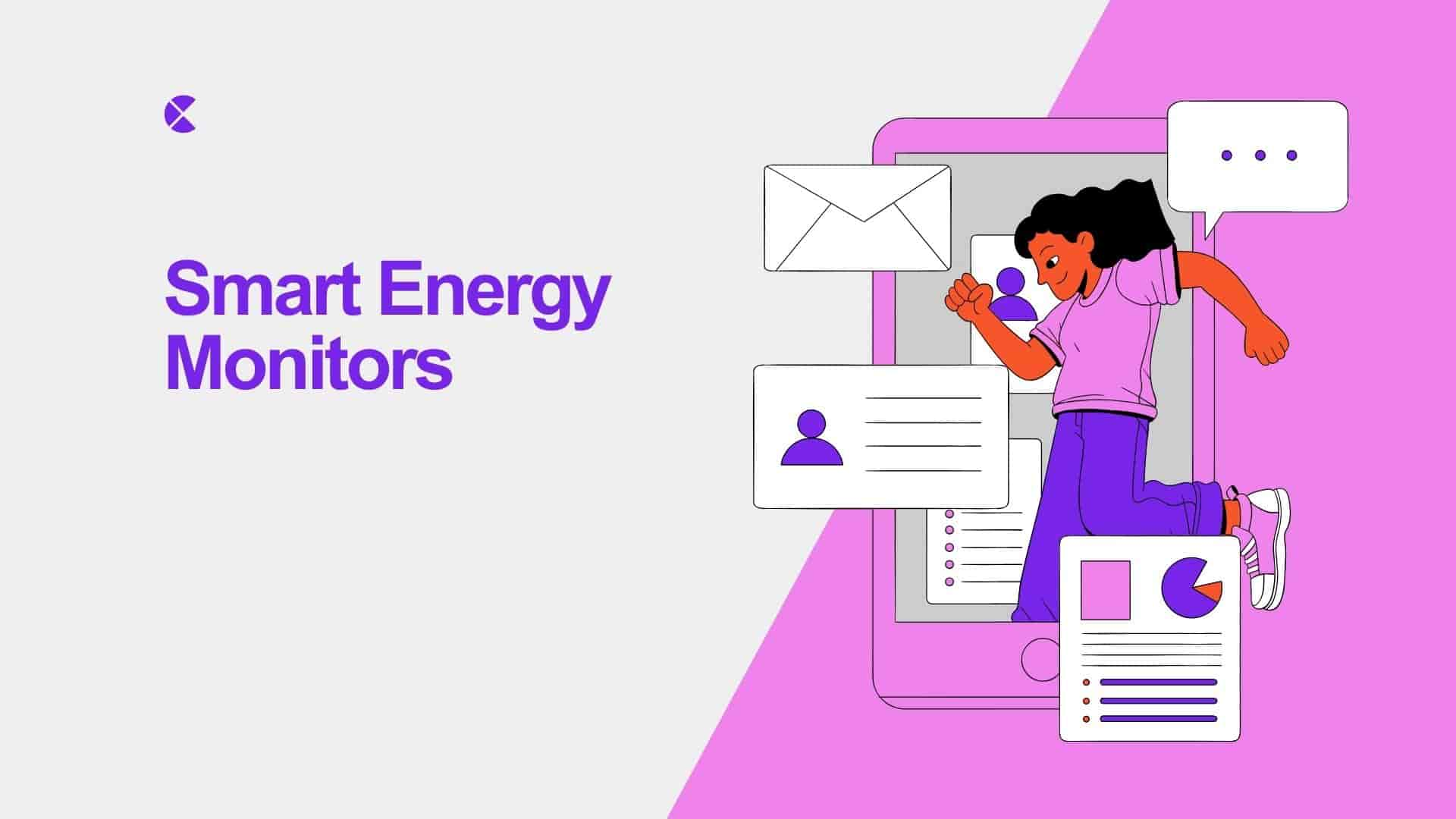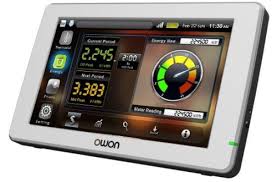What Is a Smart Energy Monitor?
A smart energy monitor is like a Fitbit for your home’s electricity. It tracks real-time energy usage, pinpoints power-hungry appliances, and delivers insights via a mobile app or display. Unlike traditional meters, these devices are user-friendly, Wi-Fi-enabled, and designed to empower you—not just the utility company. From plug-in models for single devices to whole-home systems, smart energy monitors come in various flavors to suit every household’s needs.
Types of Smart Energy Monitors
-
Plug-in Monitors: Track individual appliances (e.g., your coffee maker’s secret espresso obsession).
-
Whole-Home Monitors: Connect to your electrical panel for a big-picture view.
-
Smart Plugs with Monitoring: Combine energy tracking with remote control.
Explanation;
Why Use a Smart energy monitors?
Let’s be real—nobody loves opening their electricity bill. It’s like getting a surprise exam you didn’t study for. A smart energy monitor helps you take control by revealing exactly where your watts (and dollars) are going. Here’s why they’re a must-have for all ages:
Save Money
The average household can save 10–15% on energy bills by identifying wasteful habits (Energy Star). That’s enough for a fancy dinner or a Netflix subscription!
Go Green
Reducing energy waste lowers your carbon footprint. It’s like giving Mother Earth a high-five.
Tech Appeal
From Gen Z to Boomers, everyone loves a gadget that makes life easier. Smart energy monitors are as intuitive as your favorite social media app.
Read more: Electric Scooters 2025: Best 10 Revolution Step
How Smart Energy Monitors Work
Think of a smart energy monitor as a detective snooping on your appliances. It measures electricity flow, translates it into digestible data, and beams it to your phone or a dedicated display. Most models connect to your home’s electrical system or plug directly into outlets. Here’s the breakdown:
The Tech Behind It
-
Sensors: Detect voltage and current to calculate energy use.
-
Wi-Fi/Bluetooth: Syncs data to your app for real-time tracking.
-
AI Algorithms: Some models learn your habits and suggest savings.
Data You Get
-
Real-Time Usage: See what’s running and how much it costs.
-
Historical Trends: Spot patterns over days, weeks, or months.
-
Appliance Breakdown: Know if your AC or gaming console is the culprit.

Top Benefits of Smart Energy Monitors
Smart energy monitors aren’t just gadgets—they’re lifestyle upgrades. Here’s why they’re worth the hype:
Financial Savings
-
Cut bills by identifying energy hogs (like that old freezer in the garage).
-
Optimize usage during off-peak hours to save on time-of-use rates.
Environmental Impact
-
Lower energy consumption reduces greenhouse gas emissions.
-
Pair with solar panels for max eco-cred.
Convenience and Control
-
Monitor usage remotely via apps.
-
Get alerts for unusual spikes (e.g., “Did you leave the oven on?”).
Read more: Energy Monitor in Pakistan, Free classifieds in Pakistan
Fun for All Ages
-
Kids love the gamified apps that turn saving energy into a challenge.
-
Seniors appreciate simple displays and cost-saving insights.
Table: Benefits of Smart Energy Monitors
|
Benefit |
How It Helps |
Who Loves It |
|---|---|---|
|
Cost Savings |
Reduces bills by 10–15% |
Budget-conscious adults |
|
Eco-Friendly |
Cuts carbon footprint |
Eco-warriors, all ages |
|
Remote Monitoring |
Tracks usage from anywhere |
Tech-savvy users |
|
Easy Interface |
User-friendly apps and displays |
Seniors, beginners |
Choosing the Best Smart Energy Monitors
With so many options, picking a smart energy monitor can feel like choosing a Netflix show—overwhelming but exciting. Here’s how to find the right one:
Key Features to Look For
-
Compatibility: Works with your home’s wiring or outlets.
-
App Quality: Intuitive, with clear graphs and alerts.
-
Accuracy: Reliable data for precise savings.
-
Integration: Syncs with Alexa, Google Home, or smart thermostats.
Top Picks for 2025
-
Sense Energy Monitor: AI-powered, whole-home tracking with appliance detection.
-
Emporia Vue: Affordable, expandable, and solar-compatible.
-
Wemo Insight Smart Plug: Perfect for single-device monitoring.
Budget vs. Premium
-
Budget (Under $50): Basic plug-in monitors or smart plugs.
-
Premium ($100–$300): Whole-home systems with advanced analytics.
Installation and Setup Tips
Setting up a smart energy monitor isn’t rocket science, but it’s not quite plug-and-play either. Here’s how to get started without zapping your patience:
Plug-In Monitors
-
Plug into an outlet, connect the appliance, and pair with the app.
-
Ideal for renters or small spaces.
Whole-Home Monitors
-
Requires access to your electrical panel (hire an electrician if unsure).
-
Follow app instructions to connect sensors and Wi-Fi.
Pro Tips
-
Test First: Start with one device to learn the app.
-
Update Firmware: Ensures accuracy and new features.
-
Secure Wi-Fi: Protect your data from nosy neighbors.
While smart energy monitors offer many benefits, they also have some disadvantages to consider:
- Initial Cost
- Whole-home monitors, like Sense or Emporia Vue, can cost $100–$300, with additional expenses for professional installation. Budget plug-in models are cheaper ($20–$50) but limited in scope.
- Installation Complexity
- Whole-home monitors often require access to your electrical panel, which may need an electrician, adding cost and hassle. Plug-in models are simpler but only track one device at a time.
- Learning Curve
- Some users, especially seniors or those less tech-savvy, may find app interfaces or data interpretation challenging, requiring time to master.
- Accuracy Limitations
- Not all monitors accurately identify every appliance, especially older models or those without AI. This can lead to vague data, like “miscellaneous” usage categories.
- Privacy Concerns
- Wi-Fi-connected devices could pose security risks if not properly secured. Hackers might access usage data, though reputable brands use encryption.
- Ongoing Maintenance
- Firmware updates, app compatibility, and Wi-Fi connectivity issues can require occasional troubleshooting, which may frustrate non-technical users.
- Limited Impact Without Action
- Monitors provide data but won’t save energy unless you change habits or upgrade appliances, which could disappoint users expecting automatic savings.
Despite these drawbacks, smart energy monitors remain valuable tools for those willing to invest time and effort into optimizing their energy use.
Smart Energy Monitor FAQs
What is a Smart energy monitors?
A smart energy monitor tracks your home’s electricity usage in real time, showing which appliances use the most power. It connects via Wi-Fi to an app, helping you save money and reduce waste.
How much can I save with a Smart energy monitors?
On average, households save 10–15% on energy bills by identifying wasteful appliances and optimizing usage. Savings depend on your habits and monitor features.
Are smart energy monitors easy to install?
Plug-in models are simple—plug and go. Whole-home monitors may need an electrician for panel installation but come with clear app-guided setup instructions.
Do smart energy monitors work with solar panels?
Yes, many models, like Emporia Vue, track solar production and net energy use, helping you maximize your solar investment and savings.
Are smart energy monitors secure?
Reputable monitors use encrypted Wi-Fi connections. Ensure your home network is secure and update device firmware regularly to protect your data.
Conclusion
Smart energy monitors are like having a personal energy coach—minus the whistle and clipboard. They empower you to save money, reduce waste, and make your home smarter, whether you’re a tech newbie or a gadget geek. From plug-in models for renters to whole-home systems for eco-warriors, there’s a monitor for every household. Ready to take control of your energy bills? Pick a smart energy monitor, install it with ease, and start tracking your usage today. Your wallet (and the planet) will thank you. Leave your thoughts in the comments or share your favorite energy-saving tips!



В этом интересном тексте собраны обширные сведения, которые помогут вам понять различные аспекты обсуждаемой темы. Мы разбираем детали и факты, делая акцент на важности каждого элемента. Не упустите возможность расширить свои знания и взглянуть на мир по-новому!
Подробнее тут – https://vyvod-iz-zapoya-1.ru/